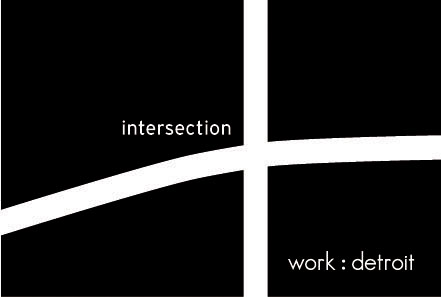Video/ 3-D animation
2007
A short segment from an hour long work-in-progress documentary video investigating the circumstances confronted by a handful of women as they reenter and intersect with urban society and social systems after long periods of incarceration in various state correctional facilities. Three urban contexts for the inmates' return will be explored: Jackson, Flint and Detroit. An initial sketch of a portion of the Detroit story is shown here.
The displayed video segment is part of larger project, approximately 1 hour in length, produced and directed by Mary Heinen and Tirtza Even.

A practicing video artist and documentary maker for the past ten years, Tirtza Even has produced both linear and interactive video work representing the less overt manifestations of complex and sometimes extreme social/political dynamics in specific locations (e.g. Palestine, Turkey, Spain, the U.S. and Germany, among others). Her work has appeared at the Modern Art Museum, NY, at the Whitney Biennial, the Johannesburg Biennial, as well as in many other festivals, galleries and museums in the United States, Israel and Europe, and has been purchased for the permanent collection of the Modern Art Museum (NY), the Jewish Museum (NY), the Israel Museum (Jerusalem), among others. She has been an invited guest and featured speaker at numerous conferences and university programs, including the Whitney Museum Seminar series, the Digital Flaherty Seminar, Art Pace annual panel, ACM Multimedia, The Performance Studies International conference (PSI), The Society for Literature, Science, and the Arts conference (SLSA) and others.
Currently an Assistant Professor at the University of Michigan’s School of Art & Design, Even has been teaching Video and Multimedia Production and Post-Production, Experimental and Documentary Film Theory, Video Art and Media Theory and Production at New York University, at Columbia University and at a number of other colleges and universities in the U.S. and abroad, and has published articles about video art history and theory in Israel and the United States.
A Fulbright scholar, She completed a Masters Degree in Cinema Studies (with a focus on Documentary and Ethnographic Film Production and Theory) and a second Masters in the Interactive Telecommunication Program, both at New York University.
Mary Heinen (Glover) is a social justice activist and human rights worker. She was sent to prison to serve life when Gerald Ford was President. With a group of sister lifers, Mary initiated and won the landmark case: Glover vs. Johnson, 478 F. Supp. 1075 (1979). This case established as the law of the land in the United States women prisoners have the constitutional right to parity/equality in education, access to the courts, treatment, classification, wages, vocational training, placement, libraries, facilities, and state industries as do similarly-situated men. The case was brought on behalf of all women prisoners of the State of Michigan: past, present and future. This victory changed the system. It was one of several civil rights cases Mary and the women prisoners would go on to win. *
Mary’s sentence was commuted after serving 26.7 years in the MDOC. Mary was freed on August 14, 2002. She completed four years of parole and discharged. Mary now lives in Ann Arbor and works at The University of Michigan for the Prison Creative Arts Project (PCAP), which she helped found in 1990. She is the Portfolio and Linkage Administrator, creating art workshops and linkages for youth and adults in lock-ups and prisons and after reentry. She is a Steering Team member with the Michigan Prisoner Reentry Initiative (MPRI). She has a particular interest in filming documentaries. Mary is an actress, poet, story-teller, and artist.
* See: Harvard Human Rights Journal, Volume 13, Spring 2000, ISSN 1057-5057: “Human Rights and Wrongs in Our Own Backyard: Incorporating International Human Rights Protections Under Domestic Civil Rights Law- A Case Study of Women in United States Prisons,” by Martin A. Geer. http://www.law.harvard.edu/students/orgs/hrj/iss13/geer.shtml
Also see www.prisonarts.org

No comments:
Post a Comment